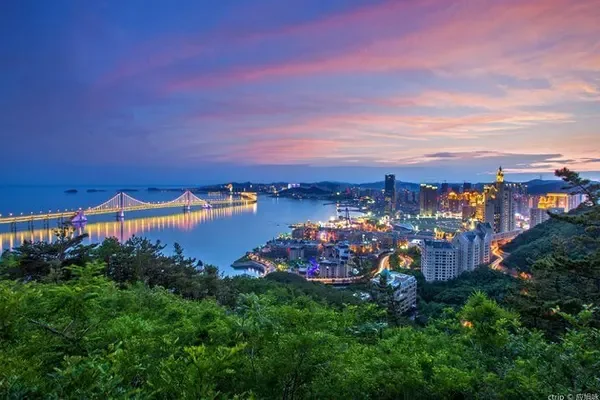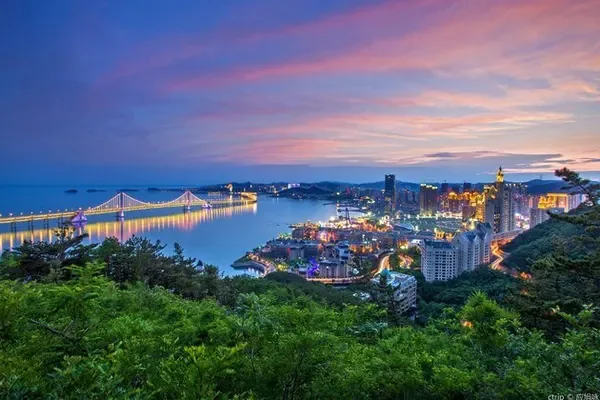Proceed along Rulin Road to find the next scenic spot - Anshun Confucian Temple.
Anshun Confucian Temple was built in the 27th year of Ming Hongwu. In the second year of Apocalypse, the Confucian Temple was destroyed by Bingxian during the "She'an Rebellion", and it was rebuilt in the fourth year of Apocalypse. After several repairs and expansions in the seventh year of Kangxi, the fifty-fifth year of Kangxi and the seventeenth year of Daoguang, Anshun Confucian Temple gradually became complete. Because of its exquisite construction and decoration techniques, it is known as "the palace of stone carving art" and "the most exquisite Confucian temple in China".
When I came to the gate of the Confucian Temple, the low wall and the almost simple gate were a bit disappointing. We thought to ourselves: This place is at most at the level of Wumiao.
Walking up the steps and entering the gate, I found that on the high platform facing me, there was another exquisite hollowed-out palace wall. The palace wall is inscribed with four big characters "Palace Wall Counts Ren". In front of the high platform, there is also a "dismounting stone" carved with stone beasts and hunchbacks, on which are engraved with a line of "civil and military officials, soldiers and civilians wait here to get off the sedan horse".
At the left and right ends of the palace wall, there is a vertical flower gate. The closed one in the west is called "Li Gate", while the open one in the east is called "Yi Road".
Enter the Confucian Temple from the "Yilu" gate. It is the first entrance courtyard of the Confucian Temple. On the east and west sides of the courtyard, there is a stone archway, and the middle squares of the archway are engraved with "virtue matches heaven and earth" and "dao crown ancient and modern". This is also the standard configuration of all Confucian temples in the world.
In the center of the courtyard is a pan pond with a circular plane. A stone bridge is built on the pan pond, and a pair of stone lions stand on the left and right sides of the bridge head.
Standing on the stone bridge, looking back at the palace wall in front, it shows his solemnity and magnificence.
After Panchi is the Lingxing Gate of the Confucian Temple. The Lingxing Gate has four pillars, three gates and the third floor. Unlike ordinary Confucian temples, the Lingxing Gate does not use Tongtian pillars. Instead, a mythical beast was carved in stone on the stigma. In addition, the stone carvings of the Lingxing Gate are also exquisitely decorated, and the reliefs of the Eight Immortals and operas on the square beams are worth watching carefully.
On the left and right of the Lingxing Gate, there are three buildings with wide faces and hard tops, which are the Jiexiao Temple and the Minghuan Temple. This is also the standard configuration of the Confucian Temple.
Passing through the Lingxing Gate is the second courtyard of the Confucian Temple. On both sides of the second entrance courtyard, there is a two-story pavilion with two eaves on the top of the mountain, called "Guixiang Pavilion" and "Zunjing Pavilion" respectively. Among them, Guixiang Pavilion is still an old building, while Zunjing Pavilion is a newly built one. On the front platform is the Dacheng Gate.
Dacheng Gate, also known as Jimen, is a standard building in the Confucian Temple. Dacheng's facade is five rooms wide and hangs on the top of the mountain. The specifications seem to be not high, but the two stone-carved dragon columns on the front porch are unprecedented stone-carved treasures. The eyes of tourists looking at Dachengmen are all attracted to these two Panlong pillars, and everything else has been turned a blind eye!
Looking from the bottom of the stone pillar: the base stone of the pillar is a stone lion, with its teeth and claws showing the king's arrogance in its might. There is a five-clawed golden dragon hovering on the cylinder, soaring through the clouds and riding the fog with great momentum. The panlongs on both sides look at each other, revealing mutual echo and tacit understanding. In the middle of the cylinder, there are also carved auspicious clouds, which rise from the wind, adding to the aura of flying dragons in the sky. What's even more rare is that the dragon body and auspicious clouds are not reliefs, but openwork. The fineness of its carving is astonishing. From the remaining colors of the auspicious clouds, we can also infer the beautiful colors of Panlongzhu in the past. Although the brilliance has faded now, the looming tones show the traces of time and the preciousness of cultural relics. We watched it for a long time, and seemed to have forgotten the passage of time, and the Dacheng Hall waiting for our visit behind.
We passed through the Dacheng Gate and entered the third courtyard of the Confucian Temple. On the front of the three-entry courtyard is the main hall of the Confucian Temple - Dacheng Hall.
Dacheng Hall is five rooms wide, with a single eaves resting on the top of the mountain. There is a front porch in front of the hall, and it is the two stone-carved dragon columns in the center of the front porch that attract people's attention. We thought that the Panlong Stone Pillar of Dacheng Gate had reached its peak, but who knew that the Coiling Dragon Pillar of Dacheng Hall showed us that there is a new sky beyond the sky!
These two Panlong columns are completely hollowed out and carved out of the whole stone. The body of the stone pillar is carved with cloud patterns, while the outer dragon and auspicious clouds float outside the stone pillar like a net. The finer knife workmanship, the lighter shape, and the more elegant style are eye-opening!
A pair of stone lions are also carved on the foundation stone of the Panlong Column. The lion perched on the dragon's pan, and the wind and clouds rose, which really shocked the rivers and mountains!
According to reports, the four Panlong stone pillars of Dacheng Gate and Dacheng Hall have a history of more than 600 years.
Other wooden pillars and plinths in the main hall also have exquisite stone carvings, which are worth seeing.
There are two verandahs on both sides of the Dacheng Hall, and the front end is the Bell Pavilion and the Drum Pavilion.
The original fourth entrance courtyard of the Confucian Temple is the "Chongsheng Temple" on the front. But the fourth entry building is now destroyed. The visit to the Confucian Temple ends here. Although Anshun is small, Anshun Confucian Temple is not among the famous Confucian temples in the country. But the splendor displayed by the Confucian Temple is beyond the expectations of tourists. We deeply feel that the visit to Anshun Old Town is worthwhile!
It's lunch time. There are several snack bars on the square in front of the Confucian Temple. It's a pity that the stores are not big, and they are all snacks, without cooking, wine and rice. So I chose a sour soup noodle shop and ordered two bowls of sour noodle soup.
It is said that sour soup powder is a special snack in Anshun, which was reported by CCTV. But when we tasted it, the taste was really average.
(unfinished, to be continued)


